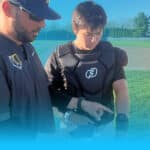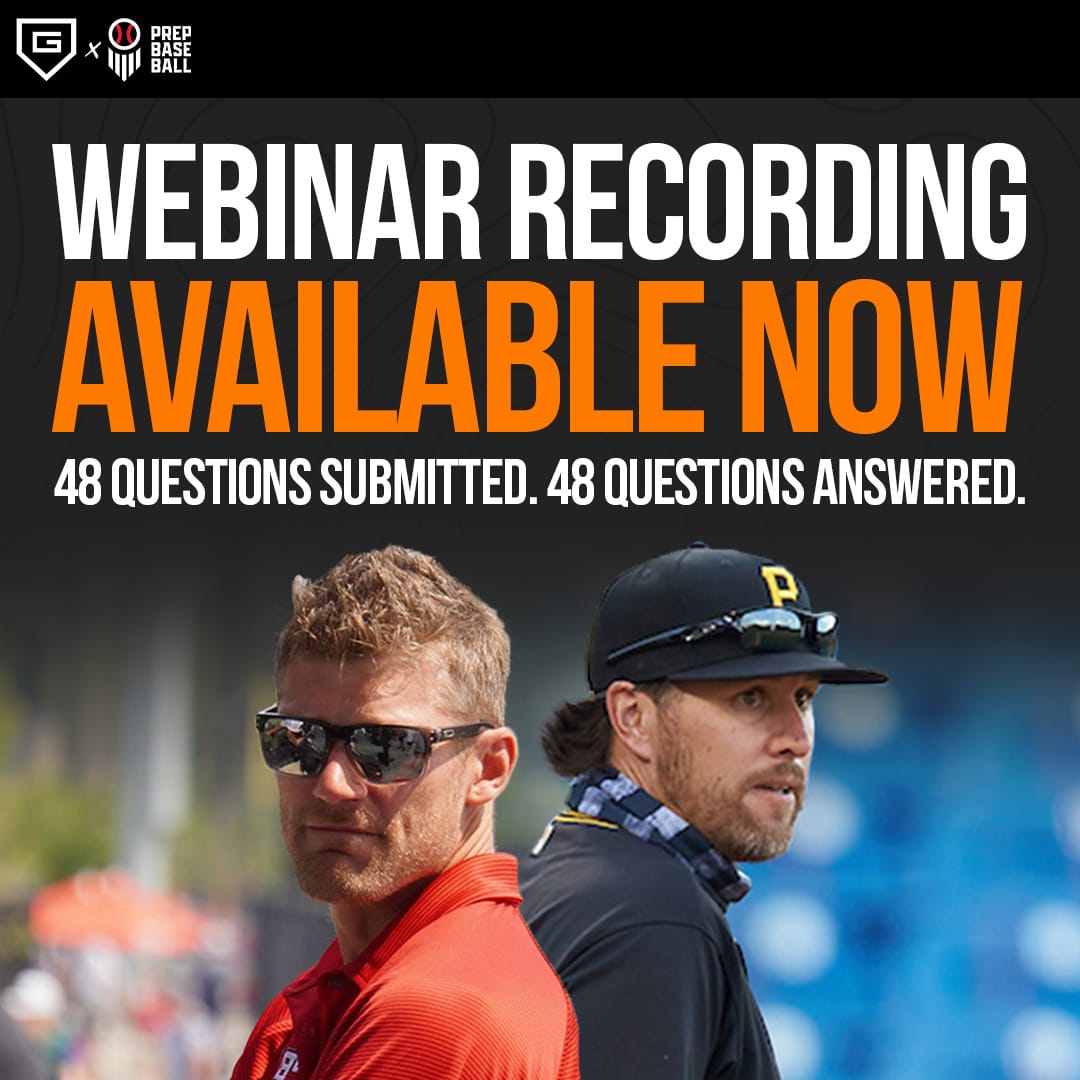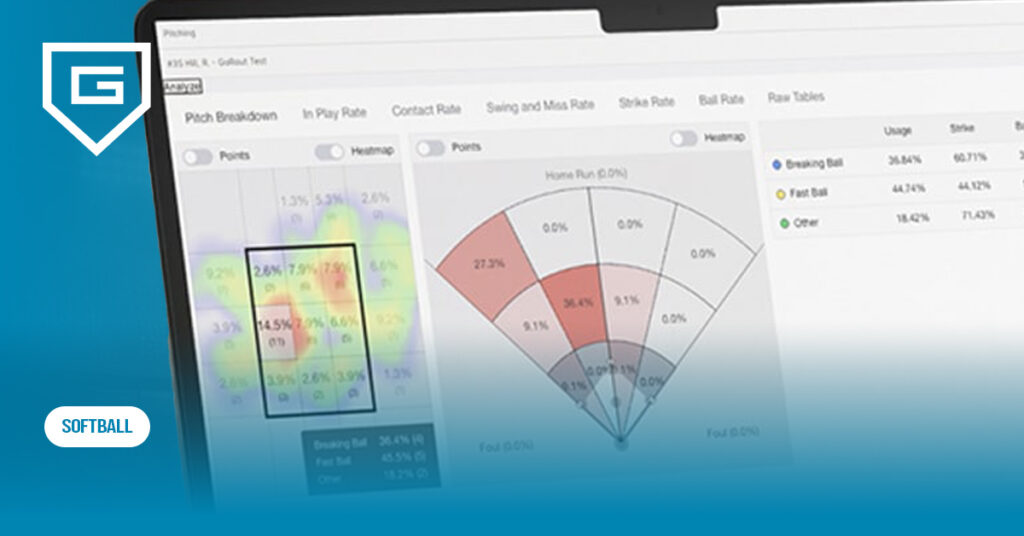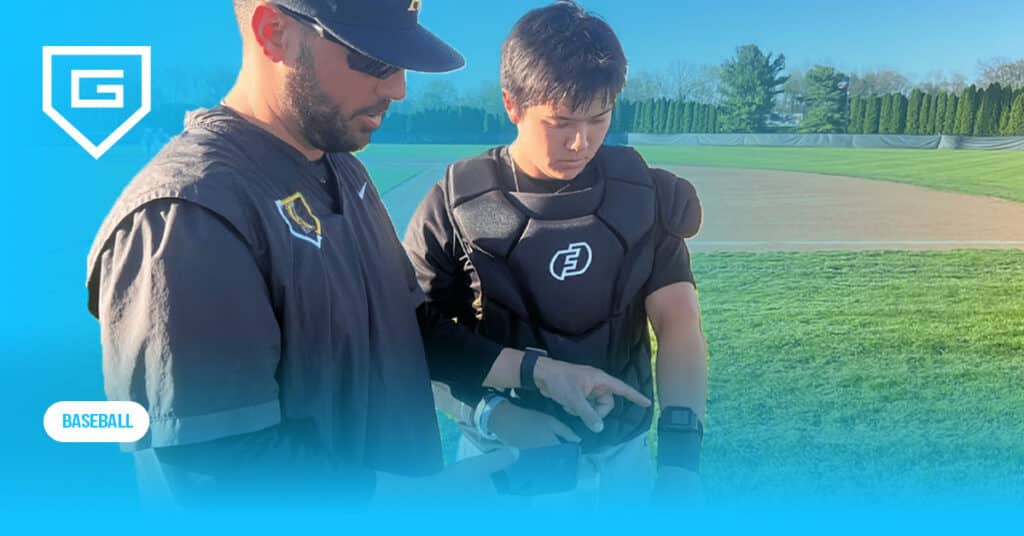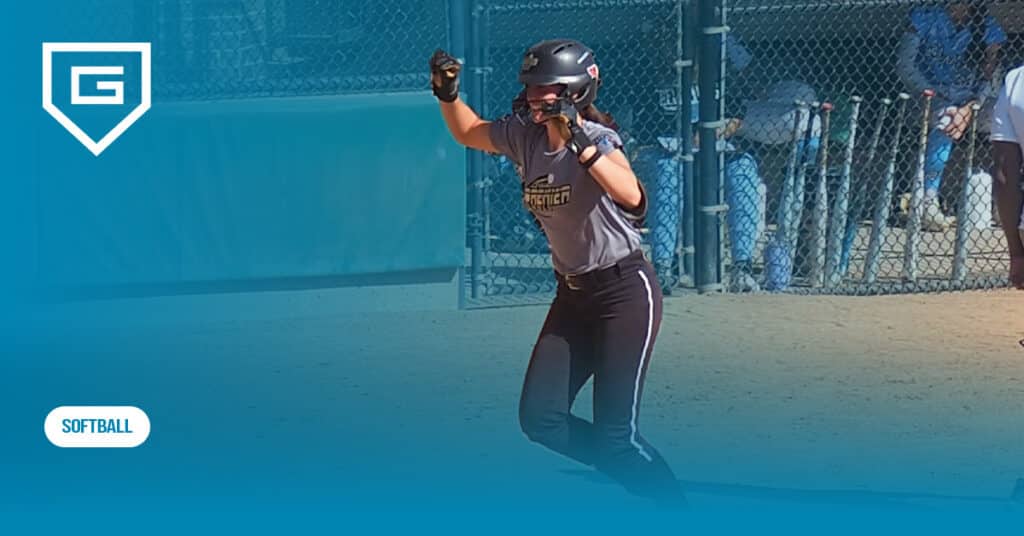Youth Baseball Training 101: From Practice to Play
Reading Time: 12 minutes
Reading Time: 12 minutes
Getting your young baseball player from backyard catch to a confident team player takes more than just attending games. Good youth baseball training combines skill building, teamwork, and fun to keep kids engaged.
Putting together a solid practice plan with a balanced mix of drills, batting practice, and scrimmages is a great way for young players to steadily develop their abilities while enjoying the game.
In this article, we’ll share the key aspects of youth baseball training. You’ll find strategies to help players improve their skills, learn how to select the best practice gear, and explore tactics to transition from training sessions to peak performance during games.
Building An Effective Youth Baseball Training Regimen

A good baseball training plan is all about mixing the basics with real game situations and keeping track of progress.
Creating age-appropriate practice plans
Young players need training that matches their physical and mental development stage. For beginners (ages 7-9), dedicate 15-20 minutes to each core skill:
- Throwing: Grip and mechanics
- Catching: Hand position and tracking
- Hitting: Stance and contact focus
- Fielding: Ready position and grounders
For older players (10-12), introduce more complex concepts like situational play and baseball strategy. Keep drills short (5-10 minutes each) to stay focused.
Remember, youth baseball practice comes second to academics. Players, coaches, and parents should prioritize school before sports. Make sure your practice schedule allows for homework time and doesn’t overwhelm young athletes.
Balancing skill development with game scenarios
Your practice sessions should combine isolated skill work with game-like situations. Begin with 15-20 minutes of basic drills, then switch to activities that simulate game pressure.
Sample practice schedule:
- Warm-up (10 minutes)
- Skill stations (20 minutes)
- Mini-games or situational drills (20 minutes)
- Scrimmage or game simulation (20 minutes)
Try using mini-games like “Situation Baseball,” where you create specific game scenarios—like having runners on base or a certain count—and let the players figure things out. It helps them develop skills and baseball IQ.
Try mixing in life skills training with technical instruction. It can help athletes work on the mental side of baseball and apply those lessons to their life outside of the sport.
Time management strategies for productive practices
Create a structured youth baseball practice schedule to maximize your limited time together. Plan each session with clearly defined goals and timeframes.
Effective practice planning tips:
- Write out your plan with specific time blocks
- Use a whistle or timer to keep transitions quick
- Prepare equipment in advance to minimize downtime
- Use assistant coaches for small-group work
Break your team into small groups that rotate through stations. It gives more reps and keeps players engaged instead of standing in long lines.
Don’t try to cover everything in one practice. Focus on 2-3 skills per session for deeper development. End practices with something fun like a hitting contest or baserunning game to keep players excited about returning.
How to track players’ progress through assessments
Regular skill assessments help you measure improvement and adjust your training approach. Create simple evaluation tools that track key metrics for each position and skill.
Record video of players early in the season to compare with later performances. This visual evidence helps them see their improvement.
Share assessment results privately with each player and their parents. Focus on growth areas and specific drills they can practice at home.
Always pair constructive feedback with positive reinforcement to keep motivation high.
Youth Baseball Training For Skill Development

To build baseball skills, players must focus on the right techniques, practice regularly, and do age-appropriate drills. Young athletes should master the basics before moving on to advanced practices.
Hitting fundamentals
Good hitting starts with correct stance and grip. Players should position their feet shoulder-width apart with knees slightly bent and hold the bat with their fingers, not palms, for better control and quick wrists.
Make sure your young player understands the strike zone and can identify which pitches to swing at. This awareness is just as important as the swing itself.
Focus on these key mechanics:
- Balanced stance – weight evenly distributed
- Hands position – back and away from the body
- Head still – eyes on the ball throughout the swing
- Hip rotation – power comes from the lower body
Practice with tee work first, then soft toss, and finally live pitching. Small adjustments make big differences in hitting success.
Fielding and defensive skills
Teach young players to catch with two hands and position their gloves depending on where the ball comes from. Ground balls should be fielded in front of the body with the glove low and open.
Try these essential drills:
- Alligator drill – using both hands to field ground balls
- Rapid fire – fielding multiple grounders in rapid succession to form quick hands
- Pop fly priorities – learning who calls which balls
Don’t forget about throwing mechanics. Young players should step toward their target, rotate their hips and shoulders, and follow through after release. Practice making accurate throws daily. It’s one of the most important fundamentals of baseball.
Pitching development
Young pitchers should focus on accuracy before velocity. Start by teaching the four-seam fastball – the foundation of all baseball pitch grips. Make sure their fingers are on the seams with the thumb underneath.
Having good balance is key in pitching. Stick to a routine that includes warming up, stretching, and cooling down afterward. The windup should feel smooth and be something they can repeat easily.
Work on pitching from the stretch position, too. It teaches young pitchers how to hold runners and deliver quickly to the plate.
Keep an eye on the pitch count based on age:
- Ages 7-8: 50 pitches per day
- Ages 9-10: 75 pitches per day
- Ages 11-12: 85 pitches per day
Remember that rest between outings is essential for arm health. Pitchers 12 and under should adhere to the following Little League guidelines:
- 1-20 pitches: 0 days rest
- 21-35 pitches: 1 day rest
- 36-50 pitches: 2 days rest
- 51-65 pitches: 3 days rest
- 66+ pitches: 4 days rest
These rest guidelines specifically focus on rest after pitching in games. A regular pitching practice routine incorporates 3-5 focused throwing sessions per week, incorporating bullpens, long toss, and drill work.
Younger players should work on pitching less often, focusing more on general throwing fundamentals and building their arm strength.
Base running and game awareness
Smart base running can win games. Teach players to run through first base, round the bag on hits to the outfield, and watch base coaches for signals. Practice proper sliding technique on a soft surface first.
Develop these critical base running skills:
- Lead-offs – proper distance and quick returns
- Reading the pitcher – recognizing pick-off moves
- Tagging up – when to go and when to stay
Game awareness means understanding situation-specific decisions. What’s the score? How many outs? Where are the runners? These questions should become second nature to your players.
Use fun games and competitions to reinforce these concepts. Base running relay races or situational challenges can make learning enjoyable while developing quick decision-making skills that translate directly to game situations.
Youth Baseball Training For Strength And Conditioning
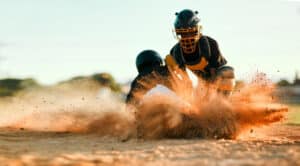
Building strength and conditioning for youth baseball players helps improve their performance and keeps them safe on the field. A smart training plan matches a child’s age and builds good habits early.
How to approach strength training and conditioning
Kids aged 7-10 should focus on body awareness and basic movements using their body weight.
Pre-teens (11-13) can start more structured training but should stick to bodyweight exercises with some light resistance bands. Form is more important than weight at this stage.
Teenagers (14-17) can gradually add more structured strength training with proper supervision. It is when you can introduce moderate weights if the technique is solid.
Never push young players too hard. Growth plates are still developing, and too much intensity can cause injuries.
Always ensure proper supervision from coaches who understand youth development. The goal isn’t bulking up but building a foundation for future skills.
Bodyweight exercises for baseball players
Bodyweight exercises are perfect for young players because they’re safe and effective without equipment. Start with these baseball-specific movements:
Core builders:
- Planks (front and side): 15-30 seconds
- Bird dogs: 8-10 on each side
- Superman holds: 5-10 reps, holding 3-5 seconds
Lower body power:
- Bodyweight squats: 10-15 reps
- Walking lunges: 8-10 on each leg
- Glute bridges: 10-12 reps
Upper body strength:
- Modified push-ups: 8-12 reps
- Inverted rows using a sturdy table: 8-10 reps
- Wall angels for shoulder health: 8-10 reps
A comprehensive bodyweight program can develop strength without risk. These exercises support arm strength, power at the plate, and fielding stability.
Try circuit training by doing one exercise after another with minimal rest. This approach builds both strength and endurance that transfers to game situations.
Mobility and flexibility routines
Baseball demands good mobility in the hips, shoulders, and thoracic spine. Young players need flexibility routines that target these key areas.
Dynamic warm-up (do before practice):
- Arm circles: 10 forward, 10 backward
- Hip rotations: 8-10 in each direction
- Walking knee hugs: 8-10 on each leg
- Leg swings: 8-10 each leg
Include rotational movements since baseball is a rotational sport. Gentle twisting exercises prepare the body for batting and throwing.
For post-practice, teach players these static stretches:
- Chest stretch (doorway stretch): 20-30 seconds
- Shoulder sleeper stretch: 20-30 seconds per side
- Hip flexor stretch: 20-30 seconds per side
- Hamstring stretch: 20-30 seconds per side
Consistency matters more than duration. A daily 10-minute routine will produce better results than occasional longer sessions. Make mobility work a non-negotiable part of your baseball training.
Injury prevention strategies
Preventing injuries starts with smart training habits. Young baseball players are especially vulnerable to arm injuries from overuse.
Track pitch counts carefully and follow age-appropriate guidelines. Even the most eager pitcher needs proper rest between outings.
Core strength is your secret weapon against injuries. A strong core stabilizes the body during explosive movements like throwing and hitting.
Balance training helps prevent lower body injuries. Try single-leg stands (15-30 seconds per leg) or walking toe-to-heel in a straight line.
Proper shoes and equipment make a big difference in injury prevention. Make sure the cleats fit correctly and that the gloves are the right size for the player’s hands.
Recovery practices for young athletes
Recovery is when real growth happens. While young bodies bounce back faster than adults, it’s important to build recovery time into your training cycle.
Sleep is the ultimate recovery tool. Youth athletes need 8-10 hours nightly. During deep sleep, the body repairs muscles and processes new skills.
Hydration is non-negotiable. Healthy snacks within 30 minutes after intense training help muscles recover.
Active recovery, like light swimming or easy cycling, can help flush out soreness. Even a 15-minute easy bike ride can boost recovery.
Teach players to listen to their bodies. Feeling extremely tired or having lingering soreness means they need more rest. Proper recovery prevents burnout and keeps the love of the game strong.
Selecting Appropriate Youth Baseball Training Equipment
Baseball coaches need to mix old-school training with new tech to put together well-rounded development programs.
Here’s what to consider:
- Younger players (5-8) should use batting tees and lightweight training balls. Pre-teens (9-12) can benefit from pitching machines and specialized gloves. Teens need advanced tools like weighted bats and resistance training equipment.
- Digital pitch trackers, swing analyzers, advanced communication devices, and slow-motion video capabilities have changed player feedback. Portable nets, pop-up screens, and specialized training balls create efficient practice environments.
- Go for equipment that serves multiple purposes. Explore team-sharing options, look for seasonal sales, and prioritize durable items that last several seasons to get the best value.
- Regular inspection prevents injuries and extends equipment life. Properly store batting nets, replace worn balls, and maintain mechanical equipment according to manufacturer guidelines.
- Prioritize tools that address fundamental skills, provide clear feedback, and offer measurable improvement metrics.
Selecting the right training equipment creates an environment where players can develop safely while making practice more efficient and enjoyable.
Team Communication Systems: Introducing GoRout Diamond
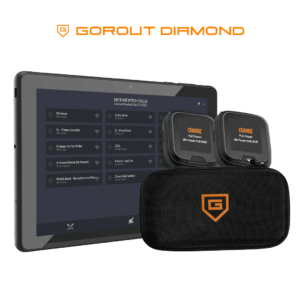
Communication in baseball has evolved beyond hand signals!
GoRout Diamond is changing how coaches and players interact on the field with its innovative electronic pitch-calling system, made in the USA in collaboration with Connect America (Pennsylvania) and KORE Wireless (Georgia).

Say goodbye to sign-stealing and miscommunication. Setting up your playbook is convenient through the user-friendly web interface. During practices and games, you simply use the mobile app to send signals to your players.
This coach-to-player communication system lets you send pitch calls directly to your players through wearable wristbands that display your instructions clearly.
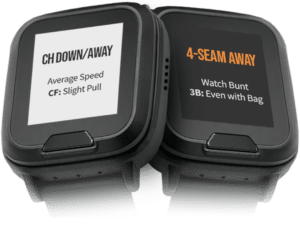
The bright screens on these baseball communication devices remain visible even in direct sunlight, and players can switch between light and dark modes for optimal viewing in different conditions.
This baseball pitch-calling system works anywhere thanks to its cellular-based technology that doesn’t require WiFi. Your team gets reliable access to communication whether you’re playing at home or away.

Key features:
- Instant communication with all players
- Weather-resistant devices
- Fully encrypted transmissions
- AI-powered analytics for game insights
- 12+ hour battery life with quick recharging
- Customizable packages for any budget
- 100% warranty against breakage
NCAA teams can use the approved single-app mobile tablet for GoRout’s in-game application while maintaining compliance with collegiate regulations. GoRout Diamond is also NFHS-approved for coach-to-catcher communication.
Testimonials and case studies help you learn more about GoRout Diamond’s impact on teams’ communication and performance.
It’s easy to get started.
Just ask for a quote or visit the online shop.
Designing Specialized Youth Baseball Training Programs
Youth baseball training should change throughout the year to help players develop properly. Make sure your team is working on the right skills at the right time.
Seasonal training setup:
- Off-season: Focus on the basics and build up players’ strength
- Pre-season: Work on baseball-specific movements and boost team chemistry
- In-season: Keep their skills sharp while avoiding fatigue
- Post-season: Make time for active recovery and fun activities
Position-specific training is crucial as players get older. You can design drills for infielders, outfielders, pitchers, and catchers that address their unique needs.
When you notice common problems, like poor throwing mechanics or batting stance issues, targeted drills can help.
As players improve, your drills should become more challenging. Start with basic skills and gradually add complexity once they master the fundamentals.
Organizing Effective Baseball Camps And Clinics

When organizing camps or clinics, start by defining clear objectives tailored to age and skill levels. Focus on fundamentals for beginners and advanced tactics for experienced players.
Recruit seasoned coaches who emphasize energy and positivity. Design a dynamic curriculum: morning skill stations (hitting, fielding, pitching), afternoon game simulations, and mini-competitions to fuel motivation.
Integrate video analysis for instant feedback. Keep groups small to ensure personalized attention. Prioritize safety with proper warm-ups, hydration breaks, and equipment checks.
End each day with a fun, low-stakes activity to reinforce joy in the sport. Collect feedback post-camp to refine future sessions—balance progress, play, and passion to foster community.
Talent Identification And Player Development
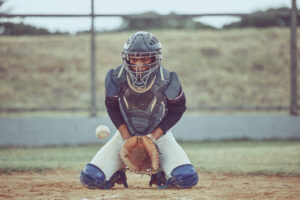
Spotting young players who have a knack for baseball requires a good eye. During youth baseball evaluations, you can identify raw talent by assessing their basic skills and athletic ability.
When looking for potential in young players, pay attention to these key areas:
- Natural athleticism: Speed, coordination, and body control
- Baseball IQ: Understanding of game situations
- Coachability: Willingness to listen and apply feedback
- Work ethic: Dedication to practice and improvement
- Positive attitude: Enthusiasm and team-first mentality
Making personal development plans lets each player level up at their own speed. Think about what each kid can do and set goals that push them a bit but aren’t too much to handle.
Players develop at different rates, so you need patience when working with varying ability levels. The key is finding ways for every player to contribute and improve, regardless of their starting point.
Transitioning Practice To Game Performance
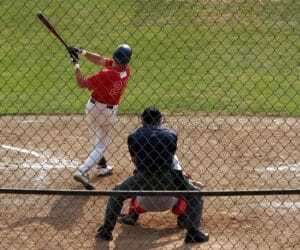
Moving from baseball practice to actual game performance can be tough for young players. You want your training to show up when it counts most on the baseball field.
Start with mental preparation: teach players visualization, deep breathing, and positive self-talk to build confidence under pressure.
Reinforce pre-game routines like consistent warm-ups and batting cage rituals that mirror practice habits.
During games, simplify coaching cues—use code words linked to drills and praise effort over outcomes. Post-game, briefly analyze successes and connect game scenarios to practice, pinpointing at least one improvement area.
Leverage technology: film at-bats to compare with practice swings, track metrics via apps, and share clips showcasing progress.
Emphasize that games are joyful extensions of training—keeping mechanics sharp while reducing anxiety. Prioritize consistency, familiarity, and low-pressure encouragement to help skills shine when it matters.
Conclusion About Youth Baseball Training
Youth baseball training isn’t just about playing the game; it’s a whole journey that helps kids build skills, develop character, and enjoy baseball for years to come.
By putting together organized practice plans, you’re giving young players the best chance of succeeding on and off the field.
Balance is key. Mix fun with skill-building activities to keep kids interested. Youth baseball training should complement regular practices and games, not overwhelm young athletes.
Make sure to adapt your training approach as players grow. What works for 8-year-olds won’t necessarily work for 12-year-olds. Always keep training age-appropriate and fun!
FAQs About Youth Baseball Training
What age should you start training for baseball?
Kids can start basic baseball training as early as 4-5 years old. At this age, focus on fun activities that develop fundamental movement skills. Around ages 6-8, you can introduce more structured baseball skills.
How do you structure a youth baseball practice?
A good youth baseball practice schedule typically follows this format:
- Warm-up (10-15 minutes): Light jogging, dynamic stretching
- Skills stations (30-40 minutes): Rotate through hitting, fielding, and throwing drills
- Team concepts (15-20 minutes): Baserunning, situational play
- Controlled scrimmage (15-20 minutes): Apply skills in game-like situations
- Cool down (5 minutes): Light stretching, team talk
Keep activities brief and engaging. Mix in fun games that reinforce skills while maintaining players’ interest.
Is AA or AAA better in youth baseball?
Neither AA nor AAA is “better” – they represent different competitive levels. AA typically features developing players learning fundamentals, while AAA offers more advanced competition.
What should a 7-year-old baseball player be able to do?
A typical 7-year-old baseball player should be able to:
- Throw with basic accuracy from 30-40 feet
- Catch most throws directly to them
- Hit a ball off a tee consistently
- Understand basic positions and game flow
- Follow simple team rules and instructions
Development varies greatly at this age! Focusing on fun and basic skills is more important than advanced techniques at this stage.


